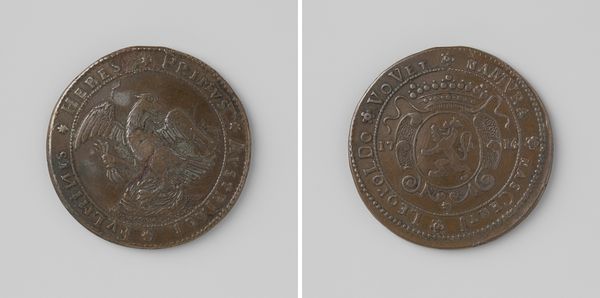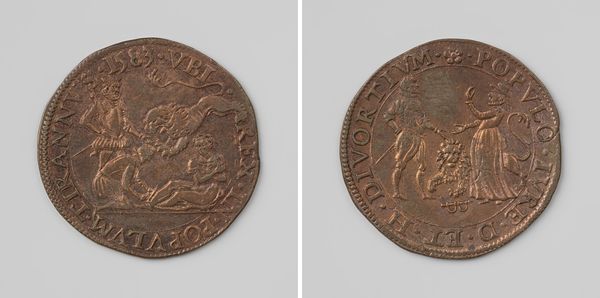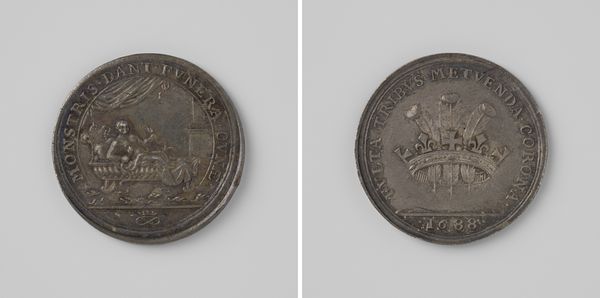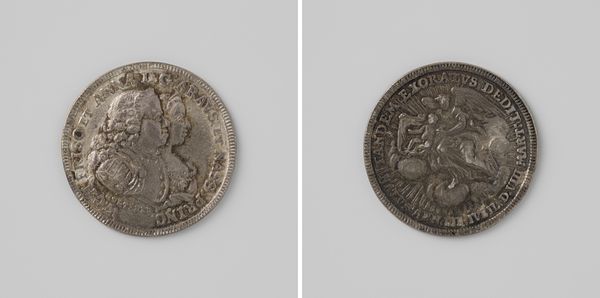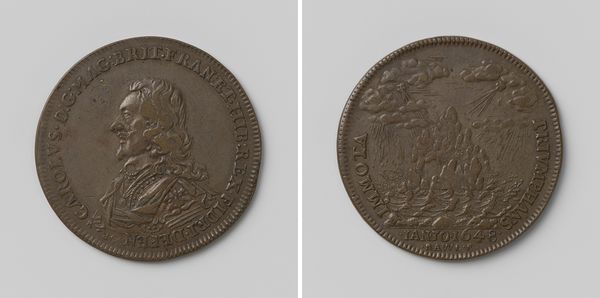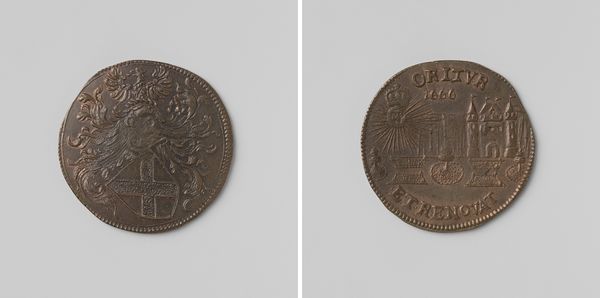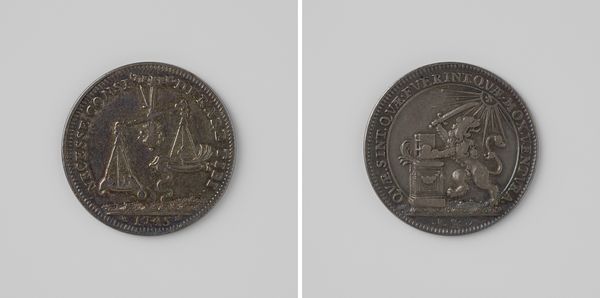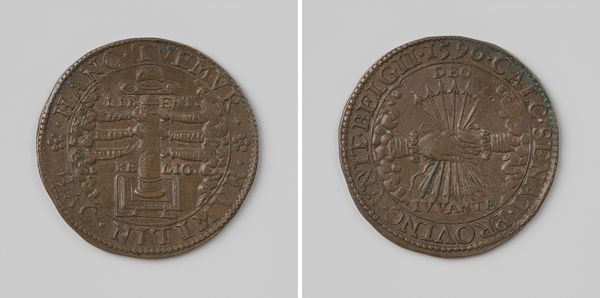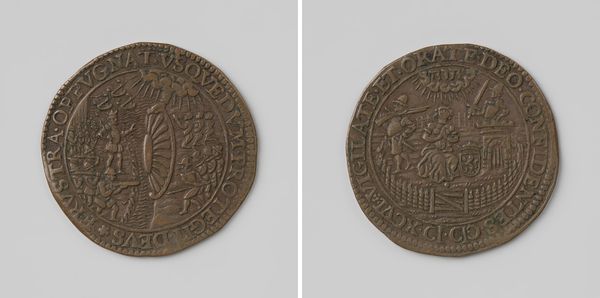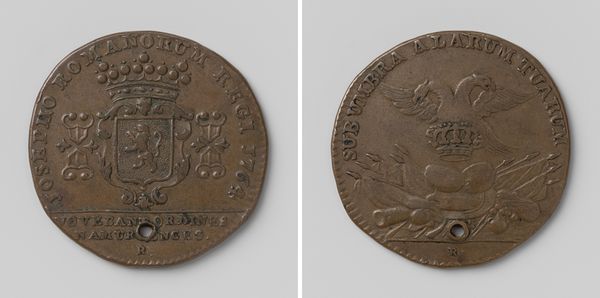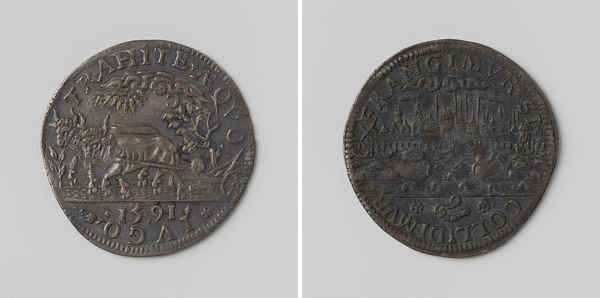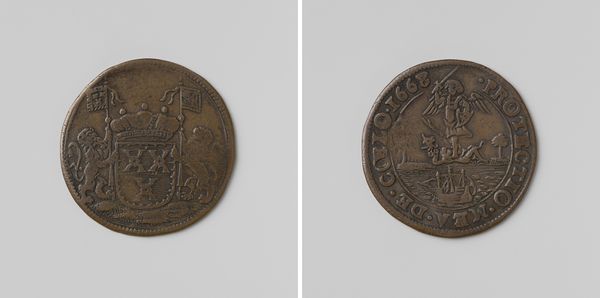
Beleg van Gibraltar en het tot zinken brengen van het schip Royal George van admiraal Richard Kempenfelt 1783
0:00
0:00
Dimensions: diameter 3.3 cm, weight 11.22 gr
Copyright: Rijks Museum: Open Domain
Editor: We're looking at a print from 1783 depicting 'The Siege of Gibraltar and the Sinking of the Royal George Ship of Admiral Richard Kempenfelt.' It's created using engraving on metal. It feels like it's trying to capture a huge, tragic moment in a very small, almost contained space. What do you see in this work? Curator: I see a powerful piece of propaganda masquerading as history. Consider the timing – 1783, the end of the American Revolutionary War, a humiliating defeat for the British Empire. This medal attempts to reframe naval disaster and colonial loss into a narrative of stoicism and perhaps even a veiled call for renewed imperial ambition. Editor: So you’re saying it’s not just about remembering the event? Curator: Precisely. The sinking of the Royal George was a devastating event, killing hundreds, many of whom were women and children. Yet, the scene here lacks any real sense of human tragedy. The focus is on the ship itself, monumentalized even in its destruction. And then consider the “Siege of Gibraltar” depicted on the other side; a symbol of British resilience. Put together, what story does this medal tell about British power, and at what cost? Think about whose narratives are amplified, and whose are silenced? Editor: That makes me think about the intended audience. Were these medals widely distributed? Who were they meant to influence? Curator: Likely a specific, elite audience. Consider who had access to such objects, and whose opinions mattered to the ruling class. How might this carefully crafted image have shaped perceptions of the war, of loss, and of British identity in a period of intense political and social upheaval? Editor: I never would have looked at it that way, seeing beyond the surface to understand the message and who it's intended for, it reveals a lot more. Curator: Exactly. It prompts us to investigate not just what happened, but also why and for whom this version of history was created.
Comments
No comments
Be the first to comment and join the conversation on the ultimate creative platform.
